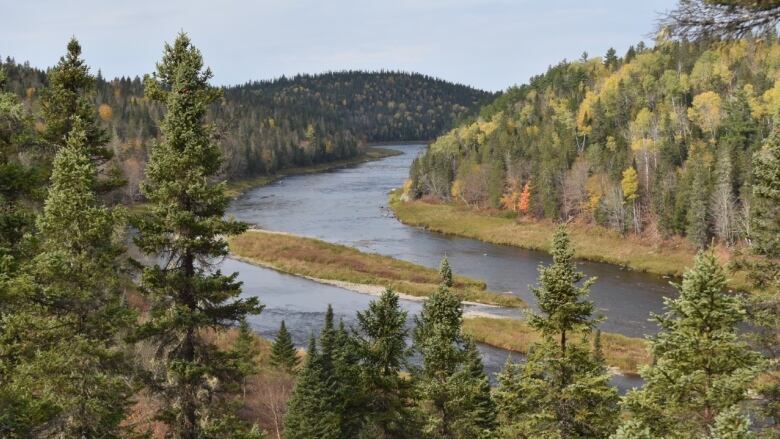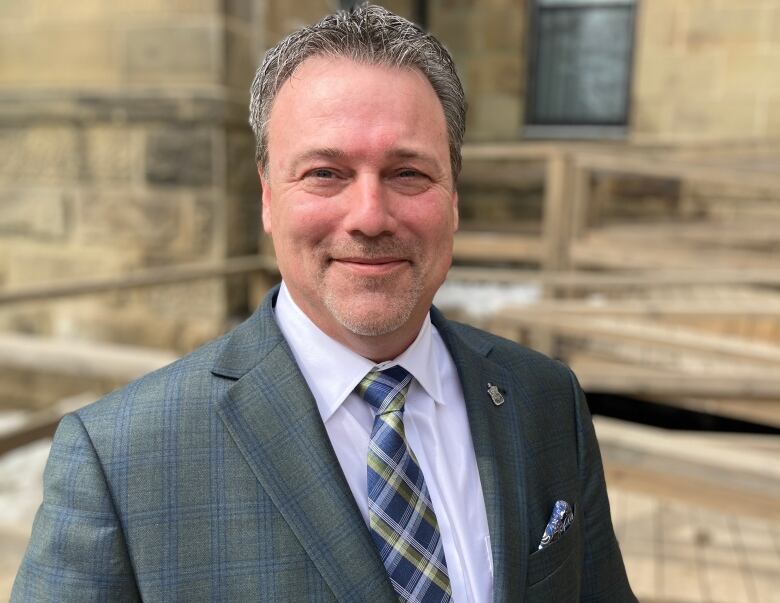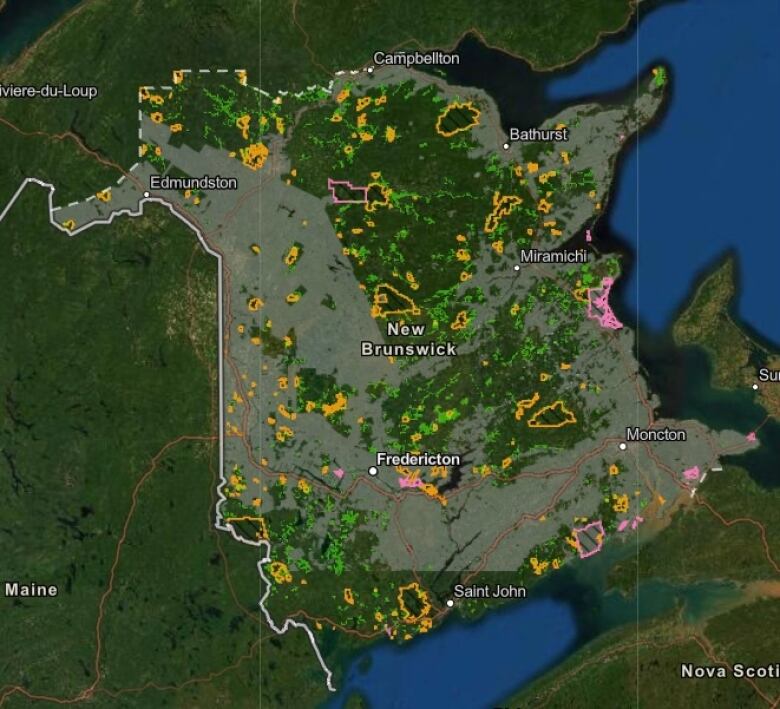Province says commitment to protect more N.B. land will be realized by end of 2023
Nearly 400,000 hectares will come under protection within next 2 years, says minister

New Brunswick is promising nearly 400,000 hectares of Crown land will become protected over the course of this year and next, though some say it is taking the government too long to act.
The province announced it would increase its protected land meaning areas safe from industry and development in 2019. Right now, 4.6 per cent of land is protected in the province, but the goal is to protect 10 per cent.
The federal government gave New Brunswick $9.3 million to accomplish thegoal, which aligns with the national target of increasing Canada's protected land to 25 per cent by 2025 and 30 per cent by 2030.
New Brunswick was initially supposed to increase its protected lands before 2021
"I wanted it done yesterday, quite frankly," Department of Natural Resources Minister Mike Holland said. His department is overseeing the program.

"But it is a process, and we did deal with COVIDover the course of a year and a half or two years, so there were some delays there," he said.
Holland said it also takes time to identify the areas best suited for conservation, or land that will protect wildlife and promote biodiversity.
The province put out a call for nominations of lands to be considered for protection. It received 642.
So far, most of those nominations are public via a virtual map. The remaining land candidates will be posted in late March, according to the province.
Starting this year and through 2023, some of those candidates will become entrenched in protection, Holland said.
Lois Corbett, executive director of the Conservation Council of New Brunswick, said she doesn't doubt the government is sincere in wanting to increase the province's protected lands, but she has concerns.
"There is this worry that while there has been lots of talk generated about protecting nature, not one more acre has been protected," she said.

Alongside the Atlantic Salmon Federation and the New Brunswick chapter of the Canadian Parks and Wilderness Society, the councilhired Ontario-based Oraclepoll Research to survey 300 New Brunswickers about their support for the province increasing its protected lands.
Oraclepoll interviewed residents 18 years and older by phone earlier this month. A full description of the survey's methodology can be found here.
The survey results show 90 per cent of respondents agreed the province should follow through on its promise to increase its protected lands in 2022.
Corbett said she thinks it will "absolutely" happen.
"I have no doubt that officials are working hard. My issue is, from a public-facing perspective, we have little information on what areas are going to be protected and why, and we have no date by which that would come into effect."
The Sentier Nepisiguit Mi'gmaq hiking trail
Not every nomination will result in protection. Some nominated land areas, Holland said, could actually end up being larger, while others could end up smaller.
That's the case for the Sentier Nepisiguit Mi'gmaqhiking trail, which extends 150 kilometres from Bathurst to Mount Carleton.
The trail, which National Geographic named one of the world's top 25 adventure destinations for 2022, is under consideration for becoming protected.
Blake Maher, a volunteer with the Mi'gmaq Trail Association, said about 9,000 hectares of land surrounding the trail would likely become protected, compared to the group's original goal of 23,000 hectares.
Maher said there are other good initiatives across the province for other lands to be protected, so he understands why not all 23,000 hectares can be protected, at least for now.
He said the associationhopes more land can be protected underfuture phases of the project, which are not confirmed by the government.
The trail association was looking to create a land corridor wide enough that someone walking along the NepisiguitRiver would see green on all sides.

"Well, with 9,000 hectares, that's not going to be the case, but at least there is a ribbon of green that hopefully we can increase with time."
Maher said the group will meet with Holland sometime in the next few weeks to discuss other ways land along the trail can become protected.
"I think it's probably one of the landmark achievements that the province has made with respect to the environment in the last number of years," he said.
Consultations with First Nations
On its website dedicated to the protection program, the government said through collaboration with Indigenous conservation leaders, lands will be protected that contribute to implementation of Aboriginal and Treaty rights, the conservation of Indigenous culture, and reconciliation.
Holland said discussions with First Nations groups are ongoing, so he was unable to share details. In a follow-up email to CBC, a department spokesperson said the government has an obligation to consult with First Nations on protecting land, and that it's committed to doing so prior to finalizing any decisions.
The government expects that process to unfold over the next several months.
Chief Ross Perley of Neqotkuk First Nation said conservation is a high priority for his community in securing spaces for the practice of their treaty rights.
He said his community was positive about the initiative from the start and had high hopes for it, but recently, he thinks the province has been stalling any progress.

"For us, we saw the project as a great opportunity to enter into co-management and co-jurisdiction agreements with the province to establish these areas. We could contribute Indigenousknowledge and experience."
Perley said the lands up for consideration are unceded territory where his community's people have long practised their culture.
"Those lands need to be vetted by Indigenous people to make sure they suit the needs of those that use our territory to practice Aboriginal and treaty rights," he said.
Right now, that's not happening, he added.
"They're cherry-picking areas they feel are appropriate for us. To me, that's not a very good nation-to-nation strategy or way forward."
He said his community would welcome any communication from the province and Holland.












_(720p).jpg)


 OFFICIAL HD MUSIC VIDEO.jpg)
.jpg)



























































































